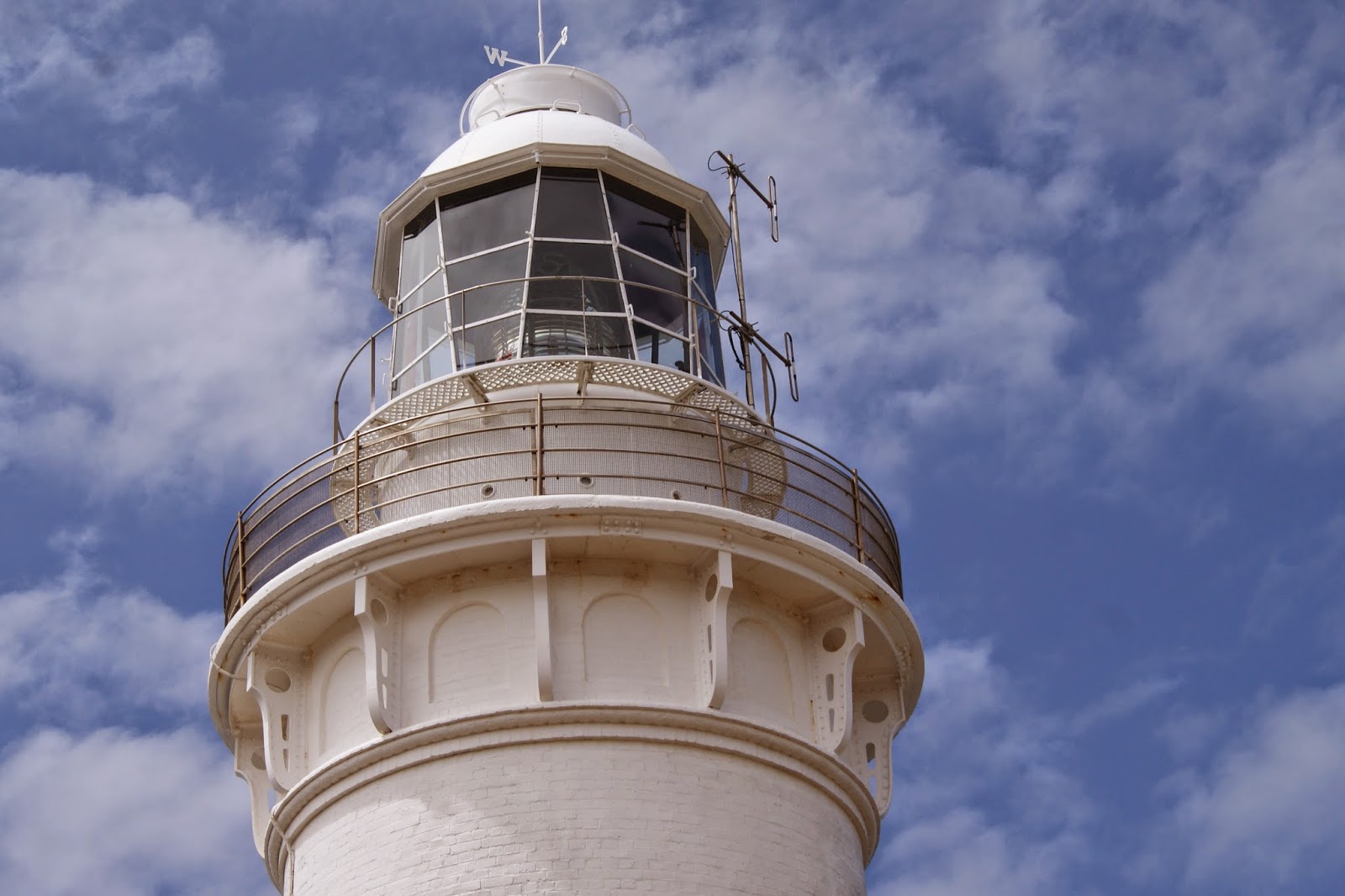Development along Tasmania's north-west coast followed the establishment of the Van Diemens Land Company in the 1820s. Many other settlements grew up, pastoralism and other industries strengthened, and then mining started. By the 1880s Wynyard, near Table Cape, was the biggest port on the north-west coast. Signal lamps in the form of iron beacons had been installed near the mouth of the Inglis River near the Cape in 1869-70. But a lighthouse was needed and in 1879 the Marine Board of Launceston voted in a ballot for a light to be built at Table Cape. However, no action was taken, resulting in frustration among locals.


Finally, the decision was made to proceed with the lighthouse and construction began in 1888. Contractor was Mr John Luck and materials were hauled to the site by the bullock team of Mr Martin Alexander, a neighbouring farmer. The light tower stands at the top of high cliffs about 100 metres above the sea. The tower, from the ground to the top of the wind vane, is 25 metres tall. It has tapering sides and is built of white-painted brick on a stone base.


A feature of the tower is the below-ground-level base. This below-ground-level base to the tower is a fairly unusual and distinguishing feature. The tower's base is a crescent-shaped stone retaining wall from the top of which a steel access bridge, with concrete deck runs to the upper level entrance door on the tower. The tower's circular staircase is made of steel as is the framework for the fly-over gangway to the door of the tower which is set behind a low wall. The cost, including the staircase and retaining wall, was 3 970 pounds with a further 2 265 for the light and other equipment.
The Chance Brothers lighting apparatus consisted of a group flashing white light with red sectors showing two flashes in quick succession. When completed in 1888 the light was powered by mineral colza oil. It was converted in January 1920 to acetylene gas. The white light is visible for 38.5 kilometres and the red for 13 kilometres.
Robert Jackson transferred from Deal Island to become the light's first Superintendent. In August of 1888, Jackson recorded the death of his one-year-old son, Bertram. The child was buried on the station, the weather being so wet that the undertaker could not drive a vehicle up the muddy road. He carried the casket before him on his horse. A fushia and a picket fence marked the grave.
The area is nominally flat topped, with a sudden rocky faced drop to the ocean. The station originally consisted of the light tower of solid brick construction and 3 houses of solid stone, being for the Head Keeper and 2 Assistant Lighthouse Keepers, plus minor buildings and flagstaff.
Table Cape Light is located on the top of Table Cape, situated about 11 km by road, west of Wynyard, on the northern coast of Tasmania. The area of the lighthouse reserve is 7.5ha and it is located on the highest part of land in the vicinity. The reserve was originally of 34 acres, but in July 1915, when the lighthouses were transferred to the Commonwealth, the area was reduced.
After the light was converted to automatic operation and the keepers removed in 1920, the houses were demolished in 1923. Only the light tower remains intact. There are currently guided tours of the lighthouse conducted every day
Main Text & Information Source – Australian Heritage Database

















